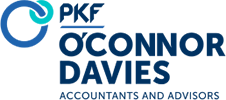Key Takeaways
- Plan sponsors must update payroll systems and employee communications to reflect increased 2026 contribution limits for retirement and welfare benefit plans.
- The 2026 elective deferral limit under Section 402(g) rises to $24,500 and the 415(c) defined contribution limit increases to $72,000, impacting 401(k), 403(b) and 457(b) plans.
- The Roth catch-up contribution threshold under Section 414(v)(7)(A) is $150,000 for 2026, requiring wage-based Roth treatment for eligible employees age 50 and older.
By Louis F. LiBrandi, Partner
Plan sponsors should review the cost-of-living adjustments (COLAs) to determine what, if any, changes must be communicated to employees through orientation meetings and enrollment forms. In addition, the amounts may need to be updated and/or input into the payroll or other human resources information systems used by the employer to monitor contributions made to an employee benefit plan.
New for 2026
The Roth catch-up wage threshold for 2025, which under Section 414(v)(7)(A) is used to determine whether an individual’s catch-up contributions (age 50) to an applicable employer plan [other than a plan described in Section 408(k) or (p)] for 2026 must be designated as Roth contributions, is increased from $145,000 to $150,000.
Understanding the 2026 Employee Benefit Plan Limits and Key Updates
The table below contains the preliminary dollar limitation for retirement plans and other benefit plan limits and thresholds for 2026. It also includes the dollar limitation for tax years 2023 through 2025. Many of the amounts for 2026 have been increased.
Cost-of-Living Adjustments | ||||
Retirement Plans | 2026 | 2025 | 2024 | 2023 |
402(g) Elective Deferrals. | $24,500 | $23,500 | $23,000 | $22,500 |
Catch-up Contributions. | $8,000 | $7,500 | $7,500 | $7,500 |
Catch-up Contributions. Age 60, 61, 62 and 63 additional salary reduction contributions; 401(k), 403(b), government 457(b) plans. | $11,250 | $11,250 |
|
|
401(a)(17) Compensation Limit. Ceiling for using compensation to determine benefits in a qualified retirement plan. | $360,000 | $350,000 | $345,000 | $330,000 |
415(c)(1)(A) Maximum dollar amount for a defined contribution plan (excludes catch-up). | $72,000 | $70,000 | $69,000 | $66,000 |
Highly Compensated Employee (HCE). | $160,000 | $160,000 | $155,000 | $150,000 |
Key Employee. Minimum compensation for an officer to be treated as a ‘’key employee.” | $235,000 | $230,000 | $220,000 | $215,000 |
Maximum Monthly Guarantee Limit (Increase %). | 4.82% | 4.56% | 5.3% | 8.79% |
Social Security Wage Base | 2026 | 2025 | 2024 | 2023 |
Social Security Taxable Wage Base. | $184,500 | $176,100 | $168,600 | $160,200 |
Welfare Plans | 2026 | 2025 | 2024 | 2023 |
Health FSA Contribution Limit. | $3,400 | $3,300 | $3,200 | $3,050 |
HSA Contribution Limit – Single. | $4,400 | $4,300 | $4,150 | $3,850 |
HSA Contribution Limit – Family. | $8,750 | $8,550 | $8,300 | $7,750 |
Catch-up Contributions. | $1,000 | $1,000 | $1,000 | $1,000 |
Contact Us
The Employee Benefit Services Group at PKF O’Connor Davies is available to assist employers with all aspects of employee benefit plan compliance. For more information, please contact your client service team or:
Timothy J. Desmond, CPA
Partner-in-Charge
Employee Benefit Services
tdesmond@pkfod.com | 551.249.1728
Louis F. LiBrandi, EA, CEBS, ChFC, TGPC
Partner
Employee Benefit Services Group
llibrandi@pkfod.com | 646.449.6327

